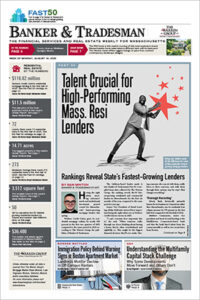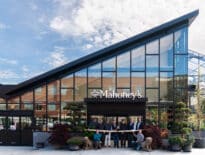High cost of debt and the Federal Reserve’s diminished rate-cutting plans are weighing on property valuations and continue to discourage transactions in many asset categories, commercial real estate executives said at an industry forum.
Investors are gravitating to the industrial and multifamily sectors, where demand has remained stable, while the office and lab markets continue to suffer from diminished leasing and oversupply, panelists noted at NAIOP Massachusetts’ midyear market roundup forum today.
The Federal Reserve board on Wednesday indicated it plans to only cut interest rates once during 2024, rather than the three times it had previously forecast, after failing to hit targets for controlling inflation.
“We are way off what I would call a healthy lending environment. It’s harder to find capital on the debt side, and when you find it, it is exorbitantly more expensive,” CBRE Executive Vice President Chris Skeffington said.
After postponing decisions on distressed office properties in recent years, lenders and special servicers are starting to take losses, Skeffington said.
“Since COVID, there has been a lot of kicking of the can and trying to avoid the doomsday cycle. Given how far we are in the cycle, there is going to be some doomsday,” Skeffington said.
Beyond the interest rate environment, which makes it harder to refinance office loans and obtain acquisition debt, historically challenging fundamentals are weighing on the office and lab markets. Greater Boston’s 187 million-square-foot office market now has a 23 percent vacancy rate, the highest in at least 40 years, according to Colliers research.
“In the best-case scenario, it will take us over 10 years to absorb enough space to get into the 10 percent vacancy rate,” said Kristen Blount, an executive vice president at Colliers, adding that the forecast assumes no new office construction.
In one positive indicator for office leasing, tenant requirements in the Greater Boston market have increased to 4.5 million square feet after bottoming out at 2.8 million square feet in 2022, Blount said. Office space requirements peaked at 6.5 million square feet in early 2019.
Oversupply continues to be the overriding characteristic of the lab market, but the historic life science supply pipeline is set to decline sharply in the next two years.
Approximately 7 million square feet of lab space is scheduled for completion in 2024, including large lab towers in Boston’s Seaport and Somerville’s Assembly Square, but new deliveries will decline to 1.8 million square feet in 2025. JLL is tracking nearly 3 million square feet of market-wide tenant requirements.
Lab developers willing to invest in speculative suite buildouts have a chance to reap rent premiums, said Anslee Krouch, a life science associate at JLL. Approximately 90 spec suites are scheduled for delivery in the urban lab market by early 2025, with asking rents up to $110 per square foot in the Seaport.
Industrial and multifamily properties present a more attractive option to investors. Industrial vacancies currently sit at just over 6 percent in Greater Boston, said Michael Dalton, a principal at Avison Young. Top-tier properties are attracting premium rents, as Persimmons Technology recently leased 140,000 square feet at 35 Crosby Drive in Bedford for $34 per square foot.
The retail market has fully recovered from the COVID disruption, as vacancy rates have dipped to near-zero at top-tier suburban lifestyle centers and Boston’s Back Bay, Newmark Executive Managing Director Matt Curtin said. Rents for prime Back Bay storefronts range up to $350 per square foot, while Newbury Street vacancies have declined to 1 percent following 40 leases signed in the past year.









